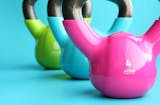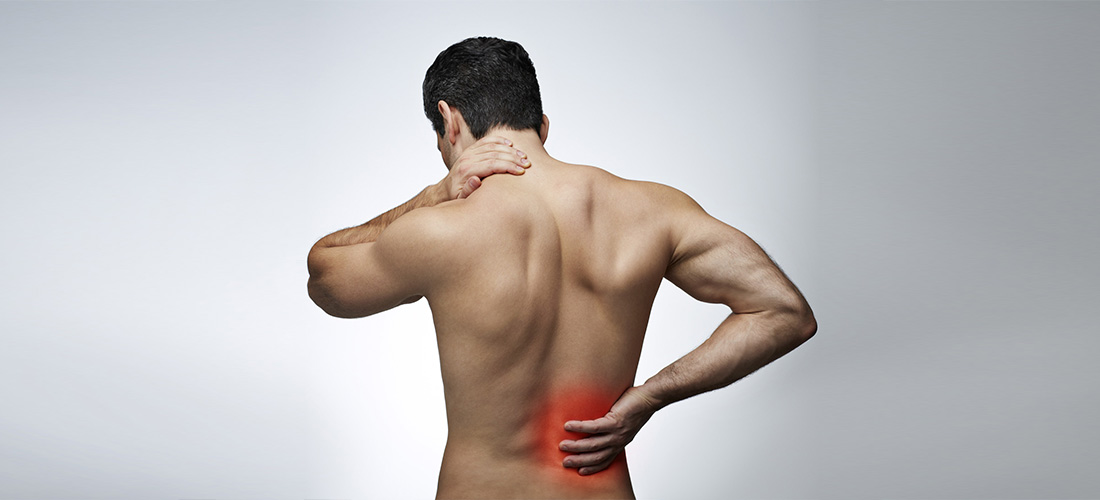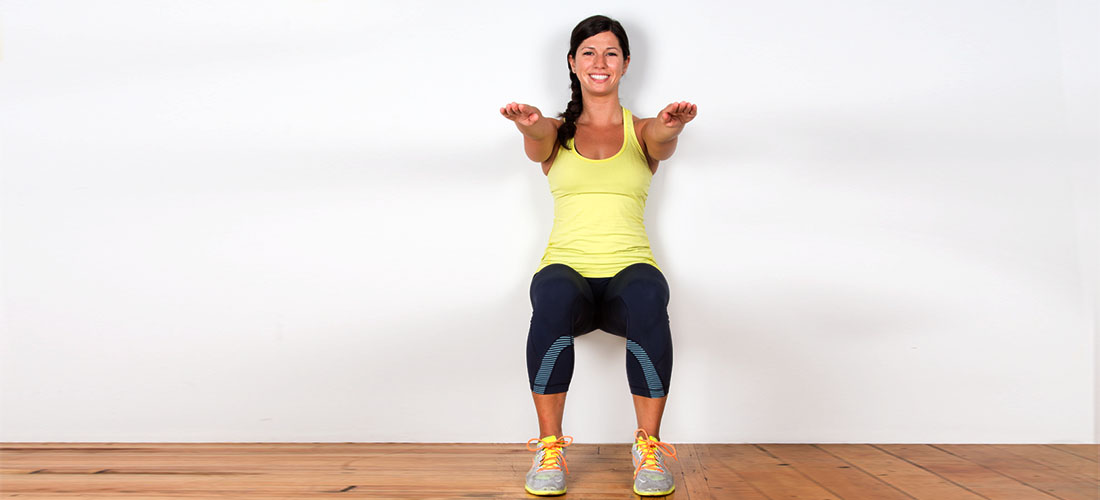Are you dealing with a painful back? A backache can be caused by an injury, illness, old age or even weak bones. But the good news here is that you need not really worry about it anymore. With the right knowledge and care; one can get away with the pain easily. So, here are the 22 simple, quick, easy and helpful ways to tackle the backache you are suffering from.
Contents
Loosen up those stressed back muscles
Stress causes muscle tension that can lead to pain, especially in the lower back as the postural support muscles tend to get overworked. Experts estimate that almost a fifth of all back pain is due to stress, so relax and let go of all the burden and tension on those muscles .
Choose flat heels over high heels
Yes ladies! We understand that it is important for you to make a fashion statement but trust me you don’t really wish to make it at the cost of your health. Choosing comfortable shoes, with small heels to support the feet, could be the key to back health [1]. Each 2.5cm (1in) on the heel doubles the strain on joints and can throw the pelvis off balance, getting you a serious backache.
Go for a quick back stretch
Back stretch is easy and comes really handy when it comes to relieving the backache. For a quick back stretch at your desk, place your feet flat on the ground and lean back on your chair so that your back arches slightly. Drop your head backwards and take a few deep breaths. This is all you need to do to get away with stressing backaches.
Stop being an arched villain
The spine begins to show the signs of wear and tear as early as at the age of 35years [2], so from here onward it becomes important to keep it flexible and strong. Lots of people forget that the back doesn’t only bend forward – it is equally important to stretch it into arched positions as well. You can do this by simply leaning backwards to release muscles or try backwards bending yoga postures.
Implement a good posture
Many back problems are caused due to adopting a bad lifting posture and by carrying heavy objects incorrectly [3]. The best lifting posture is, when the legs and not the back do the work. So, while lifting a weight, be certain to bend those knees and try carrying heavy objects closer to the body upto the waist level.
Bag a healthy back.
Carrying your bag on the same shoulder all the time can lead to muscle imbalance and weakness, leading to pain. Resolve to swap shoulders every other day or use a backpack.
Bed down to comfort.
Sleeping on your stomach can put the back and neck into various strained positions, causing stiffness and pain when you wake in the morning. To prevent such problems from developing, lie flat on your back with a pillow under your knees, or you can adopt a posture where you can sleep on your side with knees slightly bent and a pillow between your legs.
Lose weight to lessen the pain
Being overweight forces your body to carry more than its natural weight and as most people walk at least a mile every day just in normal life, every pound counts. Slimming down helps the overweight people in tackling back problems.
Alter between hot and cold to prevent swelling
Move your body
Studies show that people who keep moving the entire day heal acute back pains better than those who rest, because movement naturally makes their body to pump fluid into the spongy discs that separate and cushion the vertebrate in the back.
Sit up with sit-ups
It is estimated that strengthening the abdominal muscles helps prevent more than 75% of the lower-back problems. Regular sit-ups and abdominal exercises can help, as can strength training with Pilates and yoga classes.
Flatter your back with a little back up
Use a chair with a proper backrest to prevent pressure on the lower back, or slip a thin cushion or rolled-up jumper (sweater) behind your lower back for the right support.
Be a screen siren
Make sure your computer screen is at the right height for comfortable viewing– you shouldn’t need to lean towards or away from your screen, for example, and it should be at similar levels with your eyes. In addition, your arms should rest lightly on the desk’s surface as you use the keyboard.
Its hip
Most of those back problems stem from the hips. Stretch out the hip flexor muscles by lying on the floor with one leg flat and the other one bent from the knee. Then slowly pull the bent leg towards your chest while pressing your whole back to the floor. Hold this position for 30 seconds. Keep practicing for a day or two in sets of 5.
Sitting pretty
When sitting at a desk for long periods for time, rest your feet flat on the floor or use a foot support to prevent the weight of legs to be supported by the front of the thighs.
Straighten those legs
Bear in mind that you shouldn’t cross your legs, as it can cause the pelvis and hips to tilt and strain. Do not practice a posture in which your thighs press against the chair firmly, as this puts pressure on the veins on the underside of your thighs and leads to backache issues.
Have a siesta
The pressure on the back is more than two and a half times greater while sitting than while you are standing, and a massive ten times greater when you are sitting rather than lying down. In light of this, a ten-minute nap or lie-clown in the afternoon could deliver enormous back benefits.
Quit smoking to get healthier discs
Smokers are more likely to suffer from back pain than non-smokers [5] because nicotine restricts the flow of blood to the inter-vertebral discs that cushion the spine. To ease the strain and any discomfort in your back, get down on your hands and knees, hands palm down in line with shoulders, looking at the floor. Slowly, push your back up into an upward curve , hold this for five seconds and then release. Repeat this ten times.
Try not thinking about it
It would now appear that the old wives’ tale is right after all – the more you think about your pain, the worse it will feel. Researchers have found that the people who don’t pay any attention to their pain seem to suffer less.
Top on a calcium rich diet
Calcium is essential for keeping the spine and bones firm and flexible. There are plenty of sources besides milk, including yogurt, broccoli, kale, figs, almonds and calcium supplements which will supply sufficient Calcium for your body.
Tilt your pelvis to treat your back
Try this pelvic exercise to ease any stress you might be feeling in the lower back region. Lie flat on your back with your legs bent and feet flat on the floor. Press your lower back to the floor by tightening the abdominal muscles, hold for ten seconds and then release the position. Repeat five times, breathing normally throughout.
Pack some heat to dull the pain
To relieve chronic pain and stiffness in your back, try heated water therapies such as swimming pools, whirlpools, warm showers and steam rooms. Alternatively, apply warm compresses, hot towels or microwaveable heat packs to the area.
So now that you know how to relieve your back pains, it would be an advantage for you to know how strengthen your lower back.
References: [1] Brent S. Russell. The effect of high-heeled shoes on lumbar lordosis: a narrative review and discussion of the disconnect between Internet content and peer-reviewed literature. J Chiropr Med. 2010 December; 9(4): 166–173. doi: 10.1016/j.jcm.2010.07.003. PMCID: PMC3206568. [2] Kimberley Middleton and David E. Fish. Lumbar spondylosis: clinical presentation and treatment approaches. Curr Rev Musculoskelet Med. 2009 June; 2(2): 94–104. Published online 2009 March 25. doi: 10.1007/s12178-009-9051-x. PMCID: PMC2697338. [3] L A M Eldersa,b, A Burdorfa. Interrelations of risk factors and low back pain in scaffolders. Occup Environ Med 2001;58:597-603 doi:10.1136/oem.58.9.597. [4] Fatimah Lateef. Post exercise ice water immersion: Is it a form of active recovery?. J Emerg Trauma Shock. 2010 Jul-Sep; 3(3): 302. PMCID: PMC2938508. [5] Feldman DE, Rossignol M, Shrier I, Abenhaim L. Smoking. A risk factor for development of low back pain in adolescents. Spine (Phila Pa 1976). 1999 Dec 1;24(23):2492-6. PMID: 10626312.






Comments are off this post!